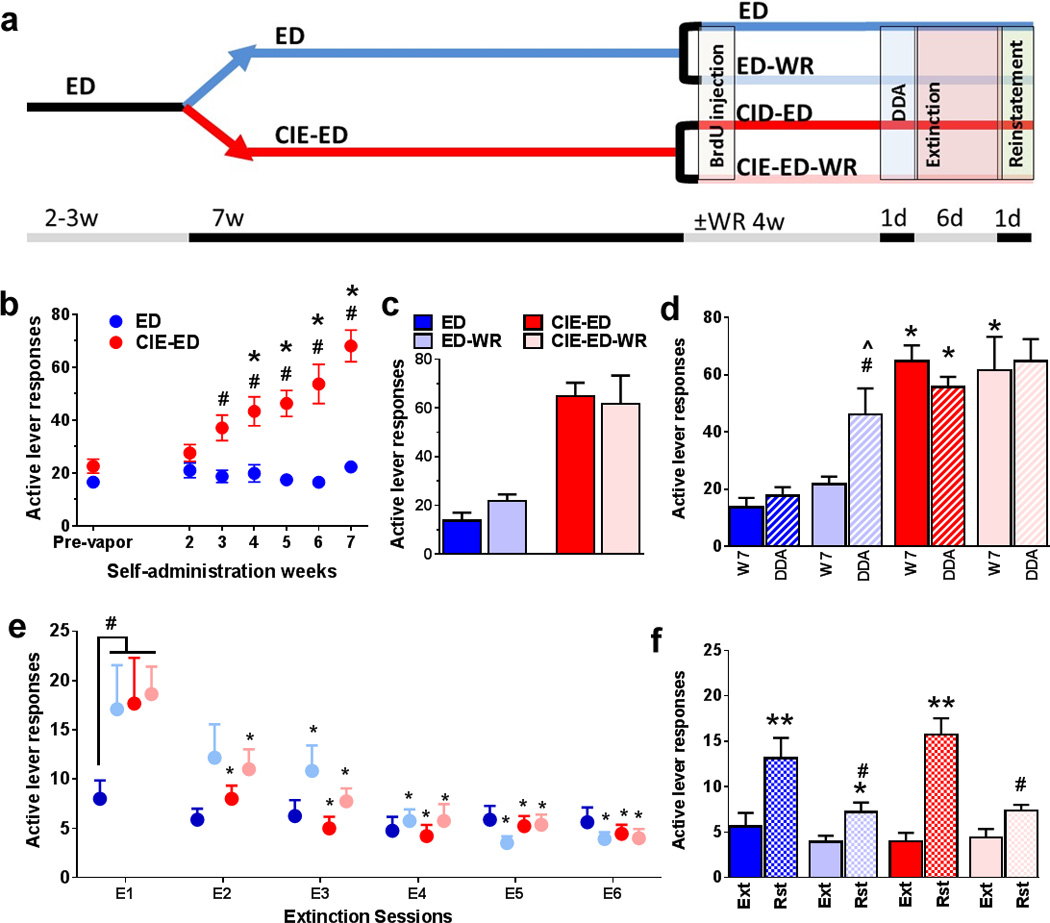Figure 1.

(a) Schematic representation of behavioral paradigm for the entire study. ED animals are always indicated in shades of blue and ED-CIE animals are indicated in shades of red. Animals were either given access to running wheels during withdrawal and abstinence or no wheels in their home cage for the same duration of time indicated by ±WR (b) Ethanol self-administration indicated as active lever responses. (c) Active lever responses averaged from last three days of self-administration prior to separation into ED and ED-WR and CIE-ED and CIE-ED-WR groups. (d) Active lever responses from ED, ED-WR, CIE-ED, and CIE-ED-WR animals when they experience a single drinking session during abstinence. (e) Lever responses during extinction (in context B) on the previously paired active lever (in context A). (f) Reinstatement (active lever presses) triggered by ethanol contextual cues. Data are represented as mean ± S.E.M.; n=6–12 each group. #p<0.05 vs ED in (b), *p<0.05 vs. week 1 in (b). *p<0.05 compared to the respective ED groups; #p<0.05 compared to ED during DDA, and ^p<0.05 vs. week 7 responses in ED-WR animals in (d). #p<0.05 indicates significant effect of wheel and CIE; *p<0.05 vs. day 1 extinction within each group in (e). *p<0.05, **p<0.01 vs. extinction and #p<0.05 versus sedentary groups in (f).
